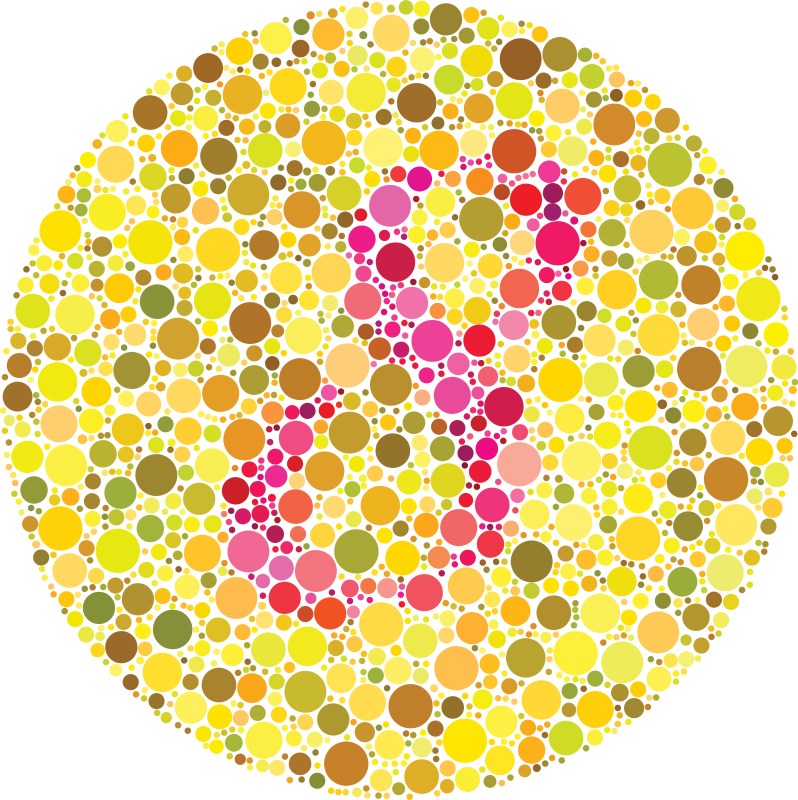
The graphic above has a number between one and nine depicted in multicolored dots. If the number you see is eight, then you likely aren’t suffering from color blindness. If it isn’t, though, you might be (you can take a full test here). If you are, there’s good news: there are now glasses that correct for color blindness.
It’s important to note they don’t “cure” color blindness so much as treat it, any more than reading glasses cure farsightedness. To understand how these glasses work, it helps to understand color blindness a little better. MIT Technology Review‘s Ryan Cross elaborates:
“Most people have three types of color-sensing cones in their eyes: red, green, and blue. The wavelengths of light that these three cones absorb have overlapping regions. Color-blindness is often a result of a malfunctioning cone that causes wavelengths to overlap even more, resulting in poor color discrimination. The EnChroma glasses use a filter to cut out these overlapping wavelengths, allowing for a clearer distinction between colors, especially red and green.”
EnChroma glasses, which look like regular sunglasses but boost saturation in red and green light, were a happy accident. Invented by Don McPherson, the corrective lenses came about when the Afred University PhD student was aiming to create protective gear for surgeons using lasers and wound up inventing a product to treat a condition afflicting one in 12 men and one in 200 women. Read Cross’ full story here. Watch a video of two color-blind brothers seeing accurately for the first time below.
This article was featured in the InsideHook newsletter. Sign up now.